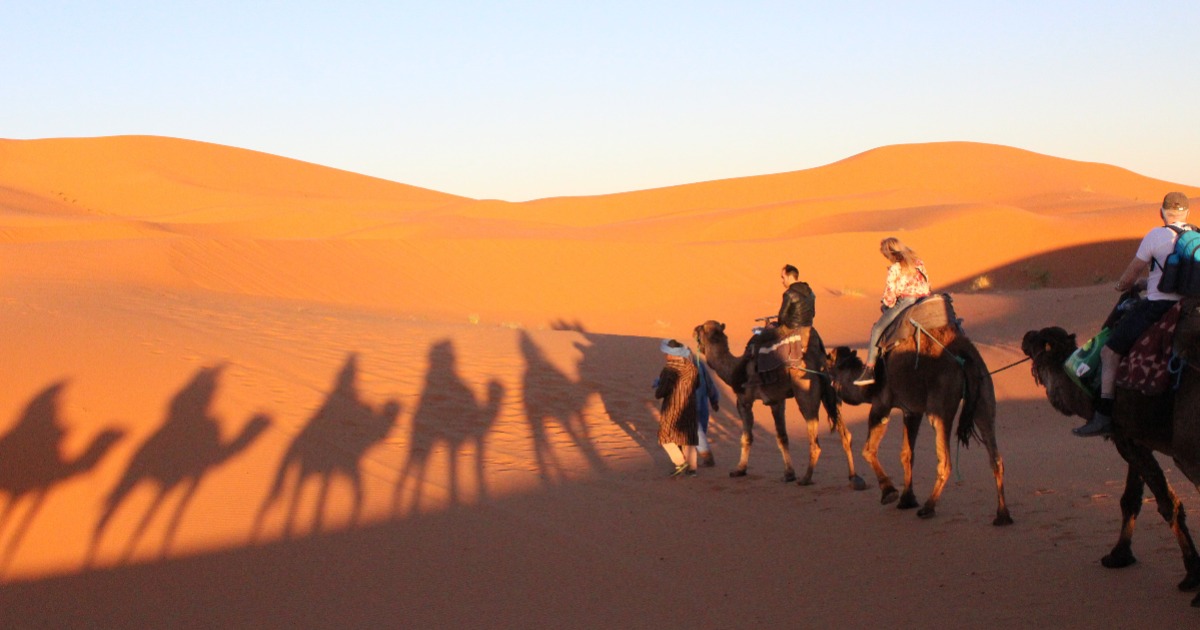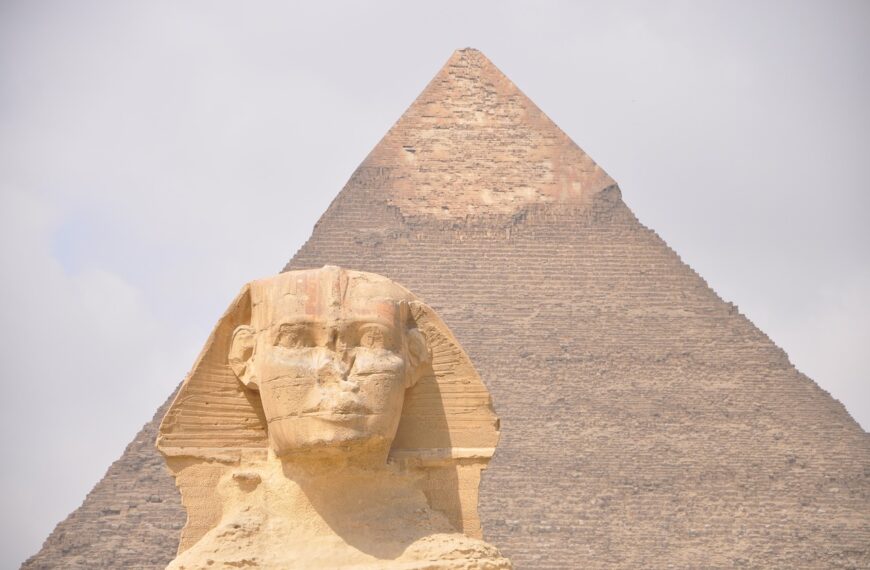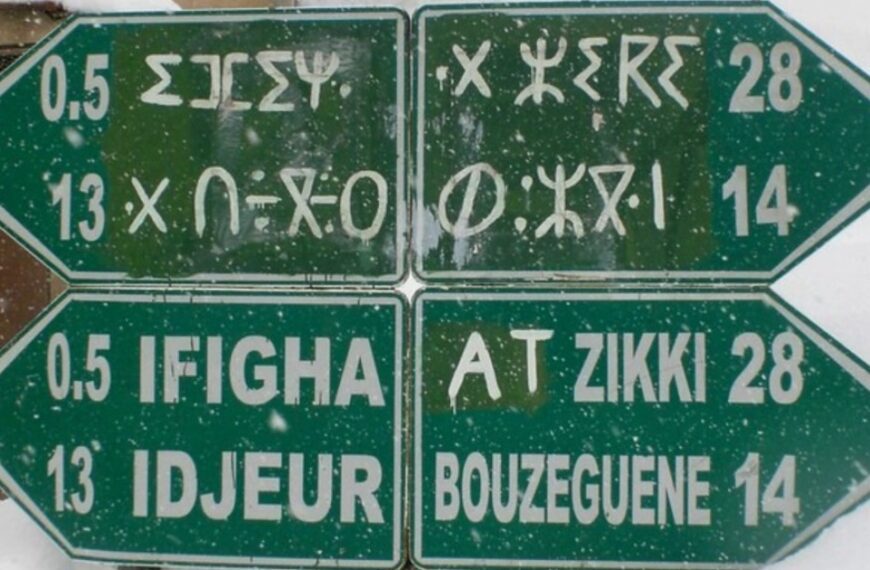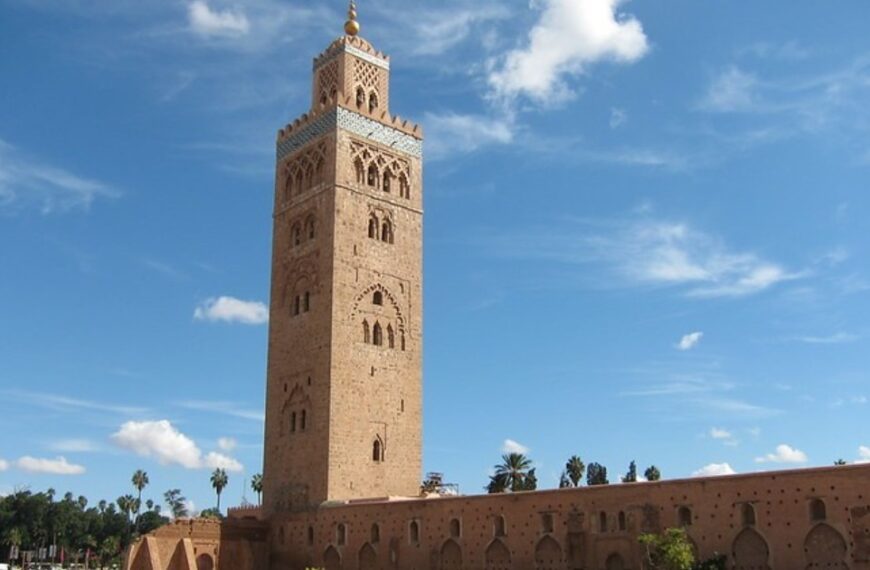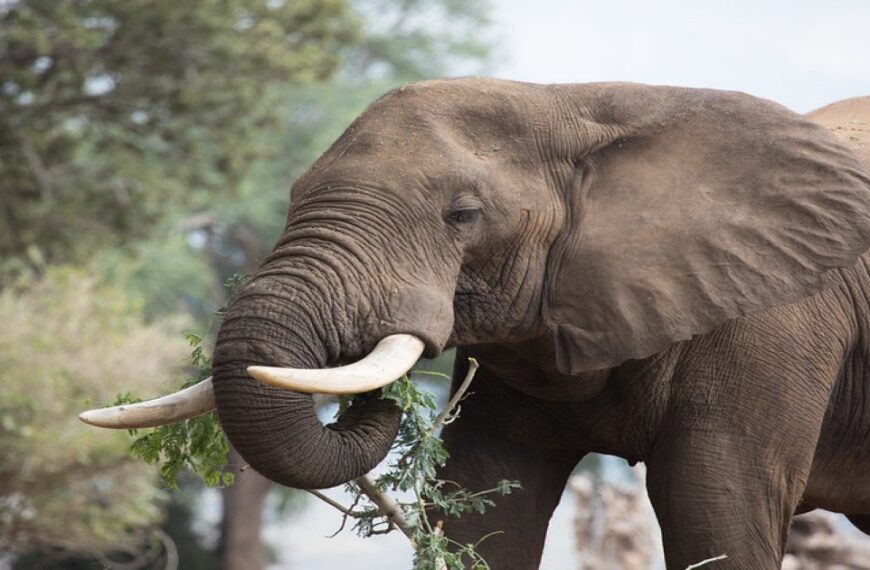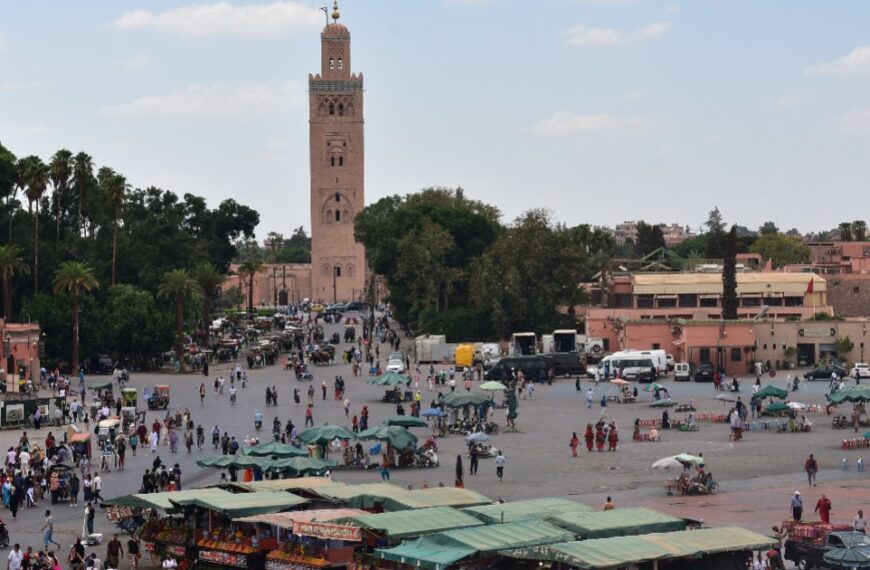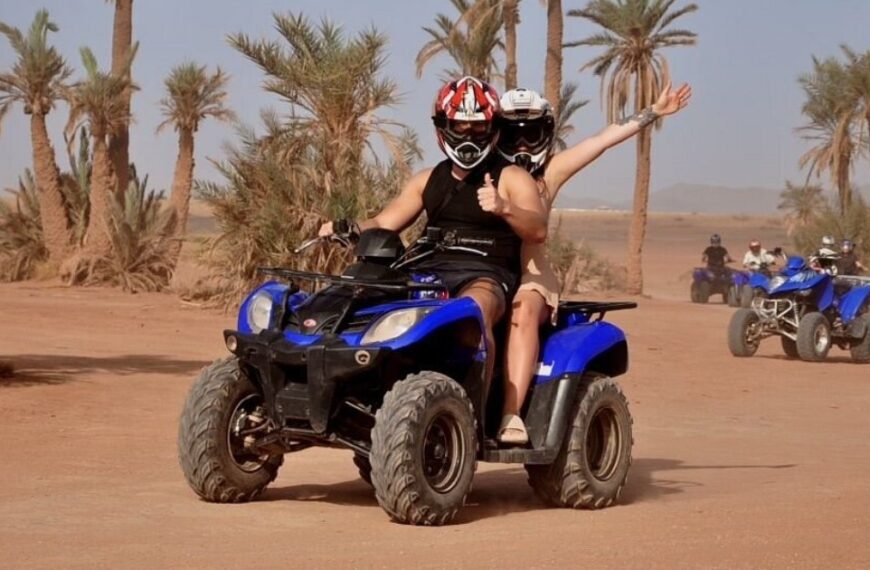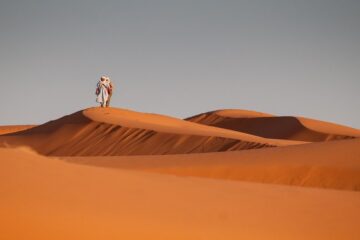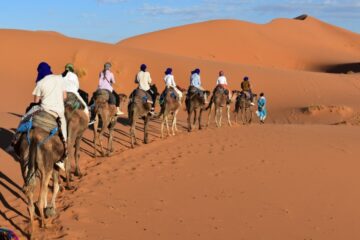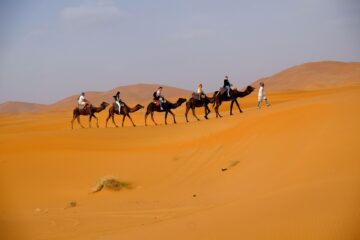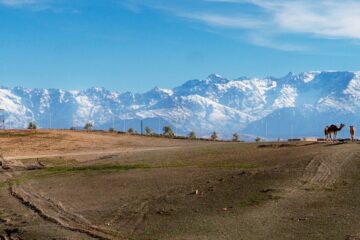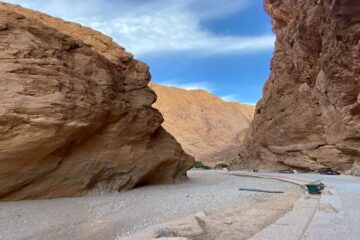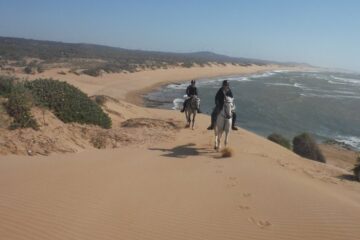Looking for the best Morocco 5-day itinerary from Casablanca? Look no further; we’ve got you on the best path that includes the capital Rabat, the cultural Fes, the desert, the Kasbah of Ait Benhaddou, The Atlas Mountains, and more. Without further ado, here is the itinerary:
Day 1: Casablanca to Fes via the capital, Rabat
There are many sites that you can visit from Casablanca to Fes, especially in the capital city of Rabat. Here are the main ones:
Porte Des Oudayas, Avenue Al Marsa:
The Kasbah of the Udayas, also known as the Kasbah of the Oudaias or the Kasbah of the Oudayas, is a kasbah located in Rabat, Morocco. It is situated on a hill at the mouth of the Bou Regreg, opposite Salé, and next to Rabat’s Medieval neighborhood. It is a UNESCO World Heritage Site, along with other sites in Rabat.
Hassan Tower:
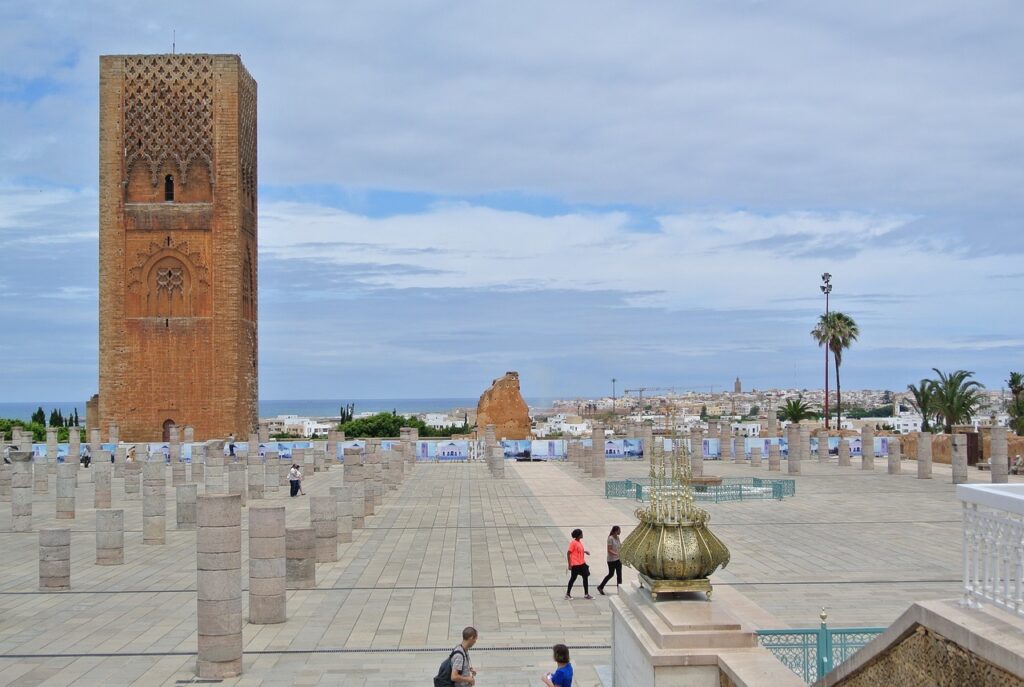
Hassan Tower Tour Hassan is an unfinished mosque minaret in Rabat, Morocco. Abu Yusuf Yaqub al-Mansur, the third Caliph of the Almohad Caliphate, commissioned it around the end of the 12th century.
Mausoleum of Mohammad V:
You will go to the Mohammed V Mausoleum, which is located across from the Hassan Tower. It is the last resting place of Moroccan King Mohammed V and his two sons, the late King Hassan II and Prince Abdallah.
After visiting these sites, you should be able to make it on time to Fes.
Day 2: Explore Fes
Fes is renowned as Morocco’s cultural capital. It is most known for its walled medina of Fes El Bali, which has medieval Marinid architecture, busy souks, and an old-world atmosphere. In the medina, religious schools like the 14th-century Bou Inania and Al Attarine, both adorned with superb cedar carvings and excellent tile work, may be found. Here is what to see during this 5-day Morocco itinerary:
The king’s palace with the seven golden gates
The Royal Palace, also known as Dar al-Makhzen, is the residence of Morocco’s King. Its origins may be traced back to the 1276 CE establishment of Fes el-Jdid, the Marinid dynasty’s royal stronghold. The majority of the palace is currently from the Alawite period.
Bab Boujloud, or the Blue Gate:
Fes el Bali’s Bab Bou Jeloud is an exquisite city gate. As the main entrance to the ancient city, the French colonial authorities built the current gate in 1913.
Madrassas of Bou Inania:
Between 1351 and 1357, the Merinid king Bou Inan built the most aesthetically pleasing of Fez’s theological institutions. The inner courtyard is a marvel of art, with exquisite zellige tilework, sculpted plaster, and gorgeous cedar lattice screens beyond the large brass entry doors. Smaller courts on each side served as classrooms, and students resided on the second floor.
Unlike many similar institutions, Bou Inania has a complete mosque. (As a result, it is closed to tourists during prayer hours.) The mihrab niche, visible from the prayer hall, has onyx columns in the manner of the Great Mosque of Córdoba. The stunning green-tiled minaret of the mosque is seen as you approach the medina through Bab Bou Jeloud.
Al Attarine Madrasa:
This school, which was established in 1325 in the heart of the medina, is a masterpiece of delicate mosaic tiles, superbly cut plaster as fine as lace, and stunning original carved wood. A 2019 refurbishment opened up the upper rooms as well, giving you a sense of student living—stunningly minimalist, but each room has its own mailbox. The school served as a kind of preparatory school for students who went on to the nearby Kairaouine University.
Mosque and University Kairaouine:
The Kairaouine, founded in 859, is the spiritual center of Fez and, possibly, all of Morocco. It is also regarded as the world’s oldest university, despite the fact that it started as a small medersa (school for Quran study) supported by Fatima Al Fihria, a member of an affluent family who immigrated from the Tunisian city of Kairouan. The Kairaouine has grown throughout the years and presently has a capacity of 20,000 people. On the ground, though, this is difficult to understand since stores and buildings surround it, concealing its actual form.
Tannery of Chouara:
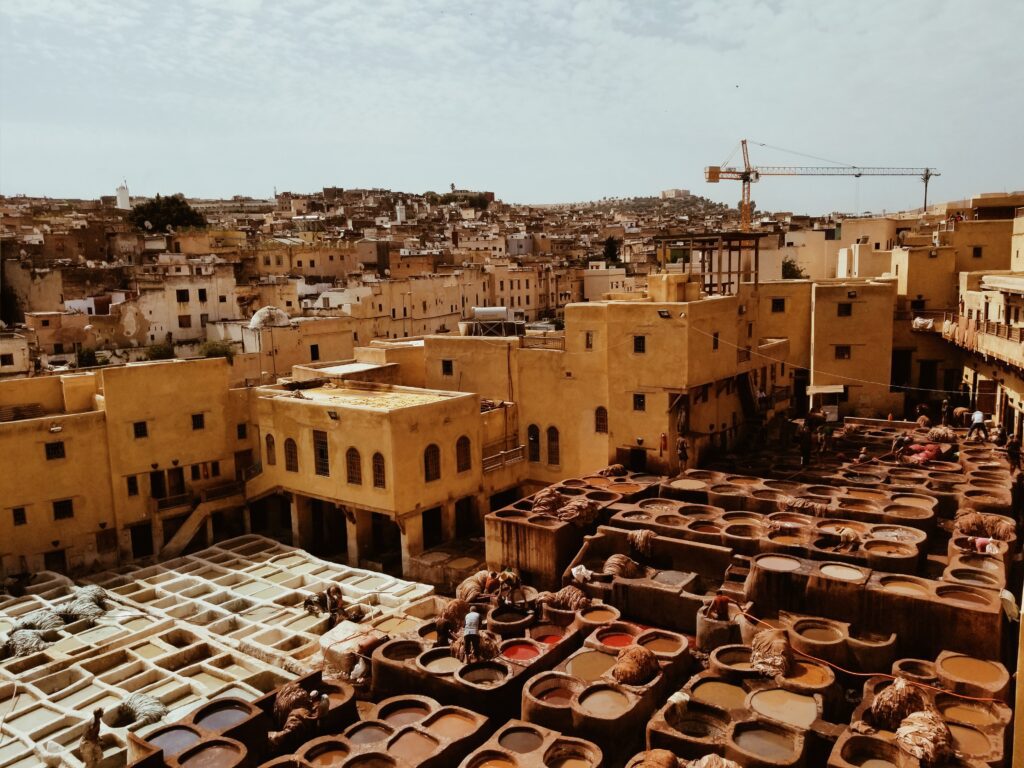
Chouara, the biggest of the medina’s tanneries, is one of the city’s most famous sites (and smells). The area, which has been in operation since at least the 16th century, was significantly refurbished in 2016, yet the vista, as seen from the surrounding balconies, appears wonderfully medieval. The tremendous physical labor that goes into the butter-soft, exquisite leather products produced in the nearby factories is noticeable. Arrive early in the morning, when the pits are flooded with colored dye.
Borj Nord panoramic view:
In 1582, Sultan Ahmed Al Mansour erected this stronghold to keep an eye on the people of Fez. The edifice, which is modeled after Italian forts, has an exhibition of European and Middle Eastern weaponry, a replica of the Bou Inania water clock, and a fascinating section on Fez’s late-nineteenth-century mechanized armaments industry. The view from the roof is spectacular. The downside is that it’s a lengthy walk from the medina (there’s no straight route), and the signage is only in French and Arabic. Take note of the noon shutdown.
Jnan Sbil:
These beautiful gardens offer a breath of fresh air after the heaviness of Fez’s medina, and they also serve as a convenient strolling path between Bab Bou Jeloud and the mellah (Jewish Quarter). They might seem a little dry and barren during the day, but they come alive after twilight, when people go to the leafy walks, cool down around the great central fountains, and visit the bird coops, where peacocks and doves are raised. On the east side, there is a second gate.
During the Fes Festival of World Sacred Music, afternoon performances are conducted here.
Day 3: Fes to Merzouga Desert via the atlas mountains
After exploring the cultural city of Fes, it is time to head to the south. On the way to Merzouga Desert, there are many sites that you should not miss. Here are the best ones:
Ifrane stone lion:
The stone lion on a patch of grass beside the Hôtel Chamonix is Ifrane’s landmark. It was carved during WWII, when Ifrane was temporarily used as a prisoner-of-war camp, in payment for the prisoners’ release, or so the tale goes, and commemorates the last wild Atlas lion, who was slain close here in the early 1920s. Getting a photo with the lion has become something of a ritual for Moroccan daytrippers.
Azrou forest; Barbary apes:
About 30 minutes of driving take you to the cedar forest of Azrou, which is famous for the barbary macaque monkeys. They are tailless monkeys that are native to the Atlas Mountains of Morocco, Algeria, Tunisia, and Libya. They are also found in a small population in Gibraltar. Barbary apes are the only wild monkey population in Europe.
The Atlas Mountains
The Atlas Mountains between Fes and the Merzouga Desert are the Middle Atlas Mountains. They are a lower range of mountains than the High Atlas Mountains, but they are still quite rugged and beautiful. The Middle Atlas Mountains are home to a variety of plants and animals, including cedar forests, Barbary apes, and eagles.
Ziz Valley in Errachidia:
After driving past the Atlas Mountains, you will arrive at the gate to the Sahara, Errachidia. This city is famous for the Ziz Valley, which lies about 40 minutes from the center. The Oued (River) Ziz flows from Errachidia through the magnificent Ziz Gorges, bringing to life the final southern valley of the Ziz and the Tafilalt oasis before ending in the rose-gold dunes of Merzouga. The magnificent Ziz Gorges, which start just south of the Middle Atlas, provide a rocky route south via the French-built Tunnel du Légionnaire (1928). The valley opens to the south, revealing a stunning sight: a thick canopy of palms trapped between Jurassic-era striated rocks. It’s worthwhile to spend some time here exploring the rich, undiscovered palmeraies (palm groves).
Merzouga desert:
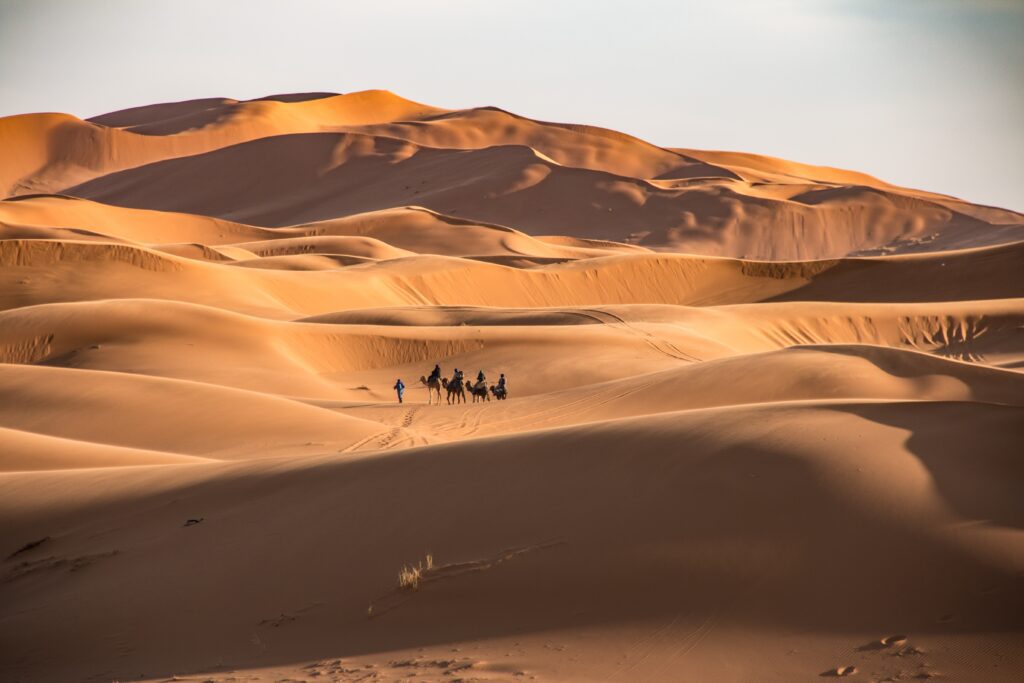
You would arrive late in the afternoon in Merzouga. It is a tiny Moroccan village near the Algerian border in the Sahara Desert. It’s recognized as an entrance to Erg Chebbi, a vast sand dune field north of town. Dayet Srji is a seasonal salt lake west of Merzouga that is often dry in the summer. When it is full, it attracts a diverse variety of migratory and desert species, including desert warblers, Egyptian nightjars, and, on rare occasions, flamingos.
The best thing to do here is to join one of the overnight camel treks. Basically, you ride the camels across the sand dunes to enjoy a magnificent overnight stay in Berber tents.
Also read: Merzouga Travel Guide: Best Things To Do
Day 4: Merzouga Desert to Dades via Todra Gorges
It is advised to wake up early in the morning to watch the sunset. After that, take the road to Dades, which is a city between Marrakech and Merzouga. Here are some of the sites to visit on the way:
Fezna’s old irrigation system:
Hundreds of thin lines flow across the desert from the Anti-Atlas mountains toward the town of El Jorf in Landsat pictures of the Tafilalt oasis in southern Morocco. These are qanats (khettaras in Moroccan), which are ancient subterranean water canals used to move water down hills without the need for active pumping.
Todra Gorges canyons:
In the Todra Gorge, where a 300m-deep fault divides the orange limestone into a steep gorge at some spots only wide enough for a crystal-clear river and single-file trekkers to fit through, being caught between a rock and a hard place is a wonderful experience. The route from Tinerhir runs through verdant palmeraies and Berber settlements until, 15 kilometers later, huge cliffs of pink and gray rock close in around the road. The approach is exhilarating, as if the gates of paradise are about to shut in front of you.
Day 5: Dades to Marrakech via Ait Benhaddou:
After a wonderful night in Dades Gorges, take the road of a thousand kasbahs to Marrakech. Here are the most amazing sites to visit on the way:
Rose valley:
Unlike the north of the High Atlas Mountains, the south is mostly arid, with a few greeneries in the region’s valleys. One of them is the Valley of Roses, also known as Rose Valley.
The Mgoun River is the valley’s lifeline, and its banks are adorned with pink, particularly during Damask rose harvesting. The rose’s origin is uncertain, although the most prevalent narrative is that pilgrims carried it from Mecca. Today, the rose is not just the region’s icon, but also the primary source of income for many people. Small cooperatives in the area produce rosewater and other rose-based cosmetics.
Ouarzazate:
Ouarzazate is the gate to the Sahara desert; it is famous for the Atlas Studios, where they made several movies. Such as, the gladiator, Game of Thrones, Prison Break, the mummy, and the list is long. The most visited studio is called Ouarzawood. You should check it out.
Ait Benhaddou Kasbah:
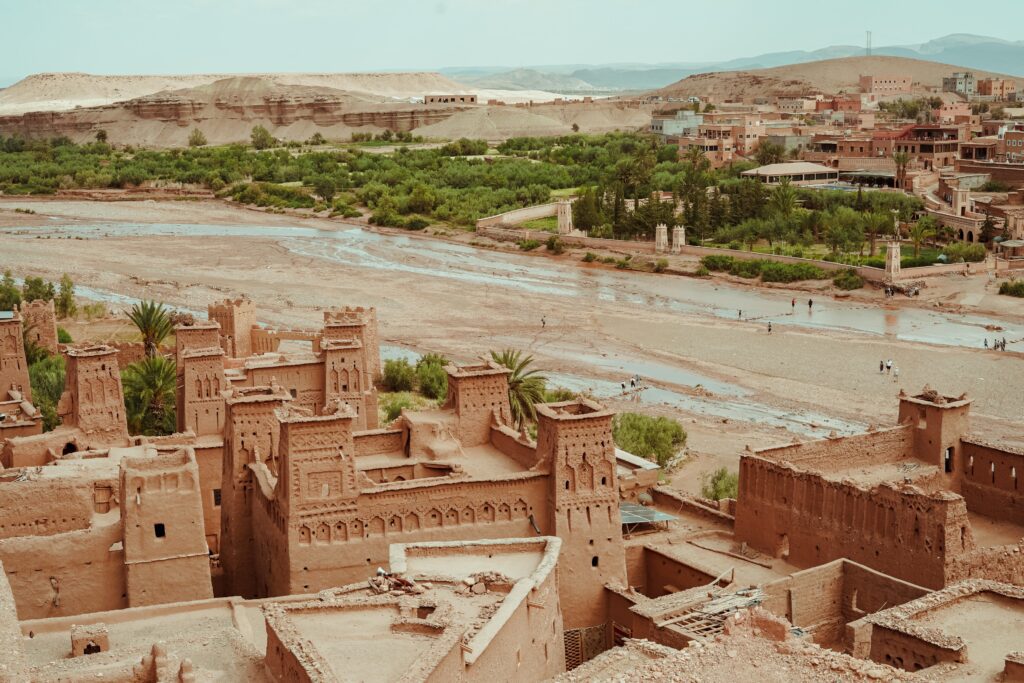
With the assistance of some Hollywood make-up, this Unesco-protected red mudbrick ksar (fortified village) seems frozen in time, still reflecting its days as an Almoravid caravanserai in the 11th century. Lawrence of Arabia, Jesus of Nazareth (for which most of Ait Ben Haddou was constructed), Jewel of the Nile (see the Egyptian towers), and Gladiator are among the films that include it. Six kilometers north of At Ben Haddou along the road is the Tamdaght Kasbah, a crumbling Glaoui stronghold with stork nests on top. You can spend about an hour here hiking, and it is advised to do it with a guide.
The High Atlas Mountains:
Local Berbers refer to it as ‘Idraren Draren’ (Mountains of Mountains), and it is a trekker’s heaven from spring to October. From the Atlantic Coast just north of Agadir to Khenifra in the northeast, the High Atlas extends diagonally over Morocco for about 1000 kilometers, enclosing Marrakesh to the south and east. Its saw-toothed Jurassic peaks serve as a weather barrier between the moderate Mediterranean climate to the north and the growing Sahara Desert to the south. You can reach up to 2260 meters in height. This road will take you about 4 hours from Ait Benhaddou to Marrakech, with some small stops on the way to admire the view.
We hope this guide will help you enjoy the best of Morocco’s itinerary 5 days.

